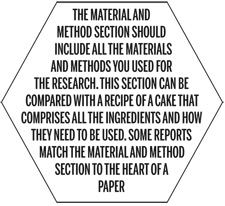
Science is often difficult to read. Many people assume that difficulties associated with reading science come from the complexity of scientific concepts, methods, data, and analysis. Therefore, to minimise the complexities that arise in the minds of the readers while reading scientific communications, writing with the reader’s mind, context and expectations is essential.
 Scientific communications are read for exploring something. Those who read interpret your communication rather than reading it simply. Readers also make interpretive decisions based on evidence or hints they receive from your scientific communication. The key goal of scientific writing is to deliver the researcher’s findings clearly and precisely to the scientific community. The primary audience of scientific writing is other researchers or scientists.
Scientific communications are read for exploring something. Those who read interpret your communication rather than reading it simply. Readers also make interpretive decisions based on evidence or hints they receive from your scientific communication. The key goal of scientific writing is to deliver the researcher’s findings clearly and precisely to the scientific community. The primary audience of scientific writing is other researchers or scientists.
 Although scientists, researchers, lecturers and students are not able to publish their findings, they learn a lot from reading scientific papers. Publishing is not the ultimate goal of research. It helps develop science and evidence bases critical thinking skills. Not all articles published in classy journals gain much interest among researchers.
Although scientists, researchers, lecturers and students are not able to publish their findings, they learn a lot from reading scientific papers. Publishing is not the ultimate goal of research. It helps develop science and evidence bases critical thinking skills. Not all articles published in classy journals gain much interest among researchers.
Some articles published in non-classy journals also gain much attention among readers due to quality writing styles. Nowadays, many scientific communications use a standard writing pattern that is IMRAD (Introduction, Materials and Methods, Results and Discussion). Today’s article illustrates tips for writing materials and methods section in Life Science based research papers.
Heart of a paper
The material and method section should include all the materials and methods you used for the research.
 This section can be compared with a recipe of a cake that comprises all the ingredients and how they need to be used. Some reports match the material and method section to the heart of a paper. Some researchers consider that writing material and method section as an easy task.
This section can be compared with a recipe of a cake that comprises all the ingredients and how they need to be used. Some reports match the material and method section to the heart of a paper. Some researchers consider that writing material and method section as an easy task.
However, for me, writing materials and methods is always a challenging one. Because, a well-written and complete material and method section allows someone else who is referring to your research paper to repeat the methods you used.
Therefore, in the methodology, you should specify the methods used for the research. Clearly expressed methods can enhance the chance of acceptance of your work by convincing reviewers that your work has been done scientifically. Clearly written methods can also facilitate data interpretation of your investigation and persuade readers to estimate their results and validity of the results.
The material and method section should include sufficient references to allow other researchers to re-produce experiment findings accurately.
This section supplies sufficient data on when, why, where and how the study was conducted and what materials were utilised. It is advisable to cite methods using original references where a method was described for the first time.
In clinical based studies, method section should clearly explain inclusion and exclusion criteria and sampling procedures. Ethical approval obtained should also be stated in methods for studies conducted using animals and humans.
The material and method section specify the chemicals used with their IUPAC names or general chemical names, names of cell lines, tissues, equipment, vendor names, instrument specifications, temperature conditions, incubation times, molar concentrations of solutions used, volumes, pH, weights of chemicals, scientific names of plants and animals, names of micro-organisms, doses of drugs used, storage conditions and names of software used for data analysis.
It should be mentioned how proper control tests and statistical analysis were carried out in the study. In animal based investigations, animal source, scientific name, weight, sex, the number of animals used, housing facilities and experimental conditions, treatments and drug doses administered and durations should be included.
Sources and sampling methods
Surgical or anaesthesia procedures should also be added in methods. For human based investigations, eligibility criteria, methods of selection and methods of follow-up are needed.
For case-control studies and molecular epidemiologic studies, certain sections are expected to be added. For examples, case-control studies should indicate the sources and sampling methods/procedure of the control group and the rationale for the selection of cases and controls must be described clearly.
In epidemiologic studies, physiological factors or living conditions that influence biomarkers should be stated. Methods of clinical trials should state sampling methods, recruitment and randomisation procedures, phase of trial, type of blinding (single or double), who was blinded, inclusion and exclusion criteria and demographic profiles which help provide a strong validity to the clinical investigation. Some studies indicate the rationale for method choices in publications. The statistical analysis section is a key section in materials and methods.
It gives a strong justification for the statistical approaches. Common mistakes I have come across in the statistical analysis section of manuscripts include insufficient explanations and specifications about statistical methods used, pitfalls in categorising continuous variables, failures to pick the best statistical analysis method, insufficient explanations about outliers, failures to report missing data and missing significance levels.
The statistical package or software used for analysis must be mentioned in the manuscript with the name, version and country.
The length of the material and method section depends on the journal you publish your work. Some journals require details descriptions about methods used, while some journals limit the content of the methods with appropriate references. The use of appropriate figures and tables are allowed in the method section to minimise the complexity.
Flow charts are commonly found in methods. The material and method sections should be written in the past tense. SI unites are recommended in the method section. A write-up on presenting results in Life Science based research papers will be presented next week.
